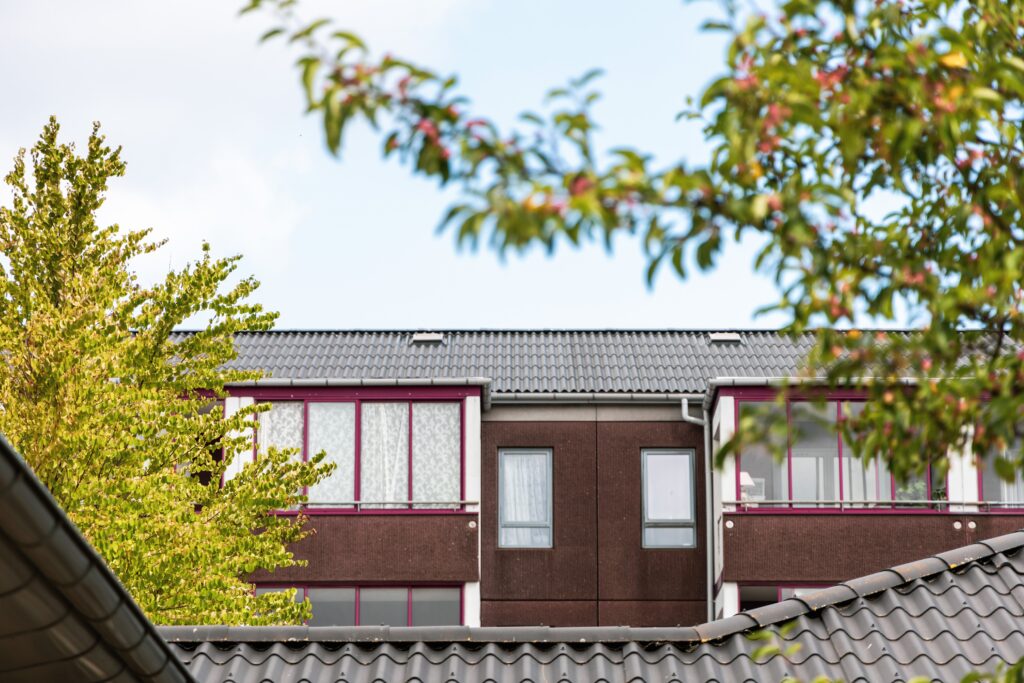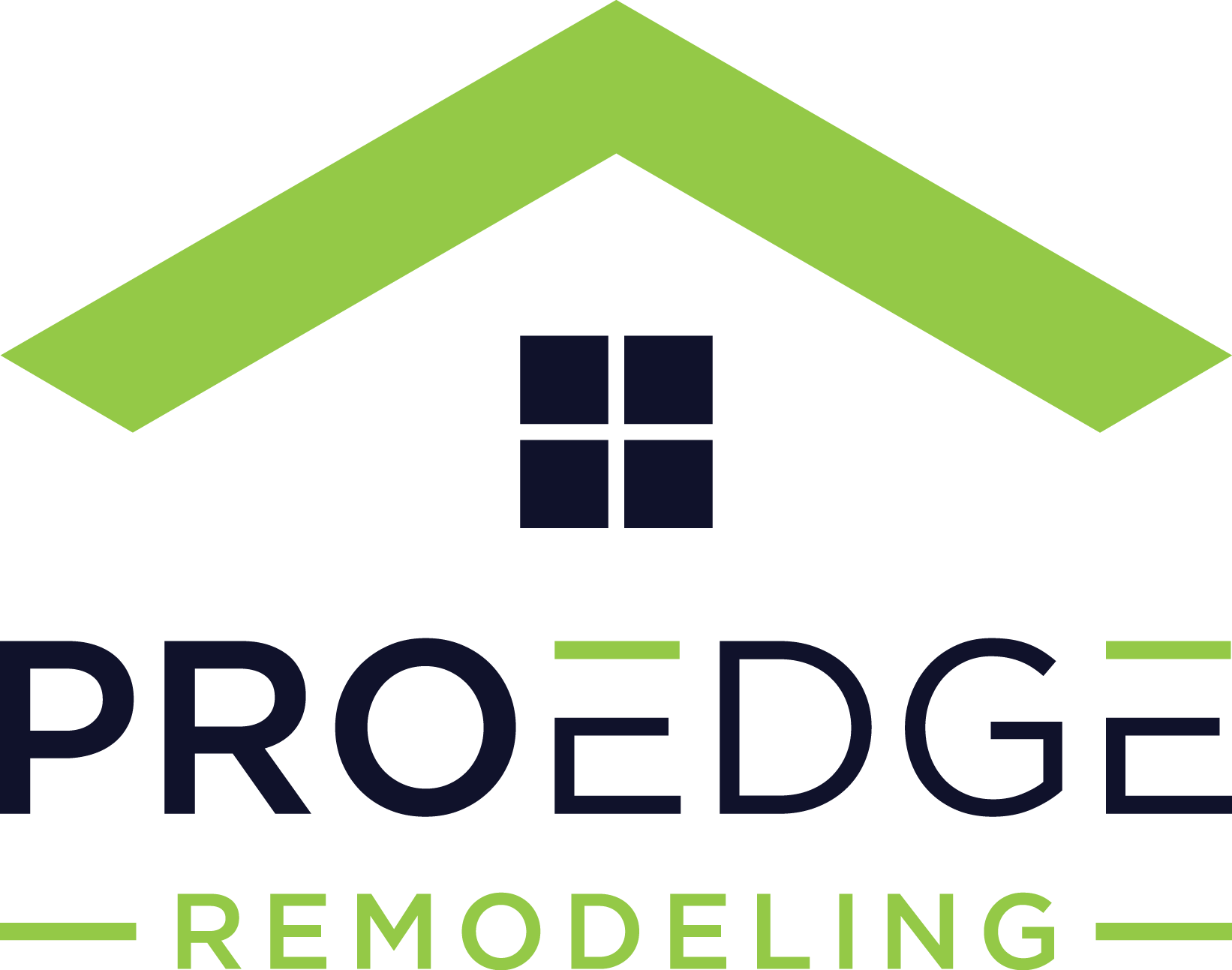Guide to Replacing a Flat Roof

If your flat roof has begun to leak, crack, or show signs of aging, it may be time to start thinking about a full replacement. While it might seem like a major undertaking, understanding the basics can make the process much more manageable.
Knowing when replacement is necessary, which roofing materials offer the best performance, and how much the project is likely to cost can help you make a well-informed decision.
Table of Contents
Signs You Need to Replace Your Flat Roof
Flat roofs tend to show deterioration in specific ways. If you’re experiencing one or more of the following issues, it may be time to consider a full replacement:
- Frequent Leaks: Persistent or multiple leaks suggest compromised roofing membranes or poor drainage.
- Pooling Water: Standing water that doesn’t drain within 48 hours can lead to accelerated material breakdown.
- Membrane Cracks or Blistering: Visible cracks, bubbling, or loose seams often indicate heat damage or moisture trapped beneath the surface.
- Sagging or Structural Issues: Warped or uneven areas may be caused by rot in the roof deck or underlying structural failure.
- Age of the Roof: Most flat roofs last 15 to 30 years. If your roof is nearing the end of its lifespan, replacement is often more economical than recurring repairs.
Choosing the Right Material for Your Flat Roof Replacement
Selecting the appropriate material is one of the most important decisions you’ll make when replacing a flat roof. The right choice depends on a variety of factors including your budget, climate, desired lifespan, and whether the roof will be walked on or used as functional space.
Below is a breakdown of the most common flat roofing materials, including their benefits, limitations, and typical costs.
Rubber Roofing (EPDM)
EPDM, or ethylene propylene diene monomer, is one of the most widely used flat roofing materials in residential applications. It is a flexible, rubber-like membrane that comes in large rolls, minimizing seams and reducing the risk of leaks. EPDM is lightweight, affordable, and relatively easy to install.
This material performs well in a variety of climates and offers reliable resistance to UV rays and ozone. However, it is more susceptible to punctures from foot traffic or debris compared to harder surfaces. For properties that don’t see much rooftop activity, EPDM is a budget-friendly and practical choice. Expect to pay between $4 and $7 per square foot, with a lifespan of 15 to 25 years.
Thermoplastic Roofing (TPO)
TPO, or thermoplastic olefin, is growing in popularity for both residential and commercial flat roofs. Its light-colored surface reflects sunlight, helping reduce cooling costs in warm climates. TPO also resists mold, chemical exposure, and punctures, making it a versatile option for a range of environments.
While TPO is generally more durable than EPDM, the quality can vary between manufacturers. It requires skilled installation to ensure the seams are properly heat-welded. Costs usually range from $5 to $8 per square foot, and you can expect it to last 20 to 30 years when installed correctly.
PVC Roofing
PVC, or polyvinyl chloride, is another thermoplastic material known for strength and chemical resistance. It performs exceptionally well in environments exposed to oils, fats, or exhaust—such as commercial kitchens or facilities with rooftop equipment. Its heat-welded seams create a watertight barrier that’s easy to maintain over time.
PVC typically costs between $6 and $10 per square foot and lasts 20 to 30 years. While more expensive than EPDM or TPO, it’s a solid investment for roofs that need extra durability and performance under demanding conditions.
Modified Bitumen
Modified bitumen is a modern evolution of traditional asphalt roofing, combining layers of asphalt and polymer modifiers to improve flexibility. It’s applied in sheets that can be installed with heat, cold adhesives, or self-adhering surfaces.
This material offers solid waterproofing, particularly in colder climates where flexibility is important. However, it can be prone to blistering over time and usually doesn’t match the longevity of synthetic membranes. Costs range from $4 to $8 per square foot, with a lifespan of 10 to 20 years.
Built-Up Roofing (BUR)
Built-up roofing, commonly referred to as BUR, is one of the oldest flat roofing systems still in use. It consists of alternating layers of asphalt and felt, topped with gravel or a reflective coating for added protection.
BUR is valued for its durability and excellent protection against water and UV exposure. However, it is labor-intensive to install, which drives up installation costs. On average, BUR systems cost between $5 and $9 per square foot and can last 15 to 30 years with consistent maintenance.
Spray Polyurethane Foam (SPF)
SPF is a lesser-known option that is gaining traction for its insulation properties and seamless application. This system involves spraying a liquid foam directly onto the roof surface, where it expands and hardens into a waterproof, insulating layer.
SPF is ideal for irregular roof shapes and can be recoated every 10 to 15 years to extend its life. It typically costs between $3 and $7 per square foot and can last over 20 years with regular maintenance. Its lightweight nature and energy-saving potential make it an increasingly attractive option for both homes and commercial buildings.
Flat Roof Replacement Cost Breakdown
Costs for a flat roof replacement vary based on several components beyond just the roofing material:
- Material Costs: Typically range from $3 to $11 per square foot.
- Labor: Usually accounts for 50% or more of total expenses.
- Tear-Off and Disposal: Removing the existing roof can cost $1 to $4 per square foot.
- Structural Repairs: Hidden damage can add $500 to $2,000+ depending on severity.
- Insulation and Drainage Upgrades: Additional features may cost $1,000 to $3,000.
Here’s an example cost breakdown for a 1,000-square-foot flat roof using TPO:
Item | Estimated Cost |
TPO Material | $6,500 |
Tear-Off | $2,000 |
Labor | $4,500 |
Disposal Fees | $500 |
Total | $13,500 |
Step-by-Step Flat Roof Replacement Process
Understanding how a flat roof replacement unfolds can help you plan for disruptions, budget effectively, and ask the right questions throughout the project. While every job is a little different, most professional replacements follow a standard process from inspection to final cleanup.
1. Initial Inspection and Estimate
The process begins with a thorough evaluation of your existing roof. A roofing contractor will check for leaks, ponding, membrane wear, and underlying structural issues. Based on the inspection, they’ll provide a detailed written estimate outlining the recommended materials, labor, and projected costs.
2. Permits and Site Preparation
Before work begins, the contractor will secure any necessary permits in accordance with local building codes. The surrounding area is then prepped for construction, which may include setting up safety barriers, protecting landscaping, and delivering materials to the site.
3. Tear-Off of the Existing Roof
The old roofing system is carefully removed down to the structural decking. This includes stripping away any damaged membranes, underlayment, and insulation layers. Proper disposal of old materials is handled at this stage, often with the use of a dumpster on-site.
4. Deck Repair and Reinforcement
Once the roof is stripped, the underlying deck is inspected for signs of water damage, rot, or structural weakness. Any compromised sections are repaired or replaced to ensure a solid, stable foundation for the new roofing system.
5. Insulation Installation or Upgrade
A fresh layer of insulation is installed to meet modern energy-efficiency standards. Depending on your existing setup, this may involve rigid foam boards, tapered systems for drainage, or additional layers to improve thermal performance.
6. Installation of the New Roofing Material
The selected roofing material—whether it’s TPO, EPDM, PVC, or another system—is then installed according to manufacturer specifications. Proper alignment, attachment, and seam treatment are critical here to ensure long-term performance and prevent leaks.
7. Sealing, Flashing, and Detailing
To protect the most vulnerable parts of the roof, such as vents, edges, and transitions, the contractor applies flashing and sealant. This step reinforces the system’s waterproof integrity and helps the roof stand up to weather over time.
8. Final Cleanup and Inspection
Once installation is complete, the job site is cleaned of debris and excess materials. A final inspection ensures that all components have been installed correctly and that the roof is watertight and code-compliant. You’ll often receive documentation for warranties, inspection results, and any required follow-up steps.
DIY vs. Hiring a Professional
Replacing a flat roof may seem like a manageable project if you’re handy with tools, but there’s more to it than meets the eye. While DIY work can cut down on labor costs, it also comes with greater responsibility and risk.
Cost Considerations
A DIY flat roof replacement can cost anywhere from $1,500 to $6,000, depending on the size of the roof and the material you choose. This can look appealing compared to the $3,000 to $12,000+ you might pay a professional. However, you’ll need to factor in the cost of tools, equipment rentals, disposal fees, and any mistakes that may require rework.
Skill and Experience
Flat roof systems demand precision. Knowing how to apply membranes, seal seams, flash edges, and ensure proper drainage isn’t something you can pick up in a weekend. If you don’t have prior roofing experience, even small errors can lead to major issues like leaks, pooling water, or failed inspections.
Time and Effort
Expect a DIY job to take longer—typically 3 to 7 days depending on your pace and any complications. A professional crew can usually complete the same project in 2 to 5 days, thanks to their experience and resources.
Warranty and Long-Term Value
DIY installations rarely come with a warranty, meaning you’re on your own if problems arise. In contrast, professional contractors often provide warranties that cover materials and labor for 10 to 25 years. This protection can add long-term value and peace of mind.
Risk and Liability
Working at height always carries safety risks. Beyond personal injury, improper installation can lead to structural damage, insurance complications, or code violations. Hiring a licensed contractor ensures the work meets industry standards and local regulations.
DIY flat roofing may save money upfront, but the trade-offs can be significant. Unless you have the tools, knowledge, and confidence to execute the job correctly, hiring a professional is often the more reliable and cost-effective choice
Conclusion
Flat roof replacement is a major project with long-term implications for your property. One of the most important decisions you’ll make is selecting the right roofing material. Each option varies in terms of durability, cost, energy efficiency, and maintenance. Choosing a material that aligns with your building’s needs and your climate can make the difference between a roof that lasts 10 years and one that performs well for 30.
Just as critical is your choice of contractor. Even the best roofing system can fail if it’s poorly installed. A qualified, licensed roofer brings experience, accountability, and a clear understanding of local codes. Quality installation not only improves your roof’s immediate performance but also extends its lifespan and protects your warranty.
If you suspect your roof may need to be replaced, start with a professional inspection. Don’t rely on a single opinion. Get detailed quotes from multiple roofing contractors, ask about materials, timelines, and warranties, and compare the full scope of work each one includes. This gives you a clearer picture of what you’re paying for and helps avoid surprises later.
Additional Roofing Resources
- Flat Roof Replacement Cost
- The Ultimate Guide to Draining Water from a Flat Roof
- Cost Guide for Common Roof Repairs

Anna has over six years of experience in the home services and journalism industries and serves as the Content Manager at MyHomePros.com, specializing in making complex home improvement topics like HVAC, roofing, and plumbing accessible to all. With a bachelor’s degree in journalism from Auburn University, she excels in crafting localized, comprehensive guides that cater to homeowners’ unique needs. Living on both coasts of the United States has equipped her with a distinctive perspective, fueling her passion for turning any house into a cherished home through informed, personalized decision-making.








